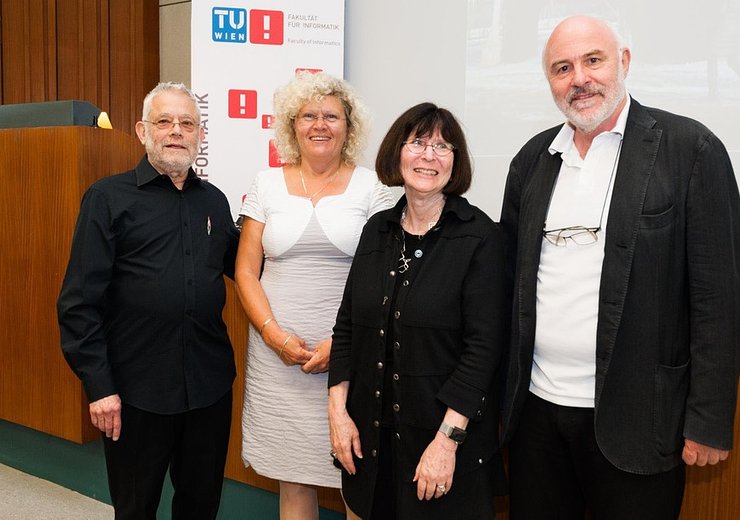“On the Way to Artificial Consciousness”
Turing Award winner Manuel Blum asks whether machines can develop consciousness, and why that needn’t frighten us.

Picture: Jan Gott / TU Wien Informatics
About
Manuel Blum is the Bruce Nelson University Professor of Computer Science at Carnegie Mellon University and a pioneer in the field of theoretical computer science. He is the winner of the 1995 Turing Award in recognition of his contributions to the foundations of computational complexity theory and its application to cryptography and program checking. Blum began his academic career at MIT in 1966 and accepted his current position at Carnegie Mellon in 2001.
Manuel Blum from Carnegie Mellon University was this year’s speaker of TU Wien Informatics Vienna Gödel Lecture. Turing Award winner Manuel Blum and his wife, renowned mathematician Lenore Blum, pursue the question of how to design machines that can feel pain and joy instead of only simulating these feelings. Artificial intelligence that feels love, fear, hate, or happiness is a frightening scenario for many people - not so for Manuel and Lenore Blum, as Manuel Blum presented in this year’s Vienna Gödel Lecture on May 24th, 2018.
Computers and the Brain
Today, findings from neurosciences are increasingly serving as a source of inspiration for work on computers, robots, and new algorithms. To further develop artificial intelligence, the research couple is focusing on the human brain. Thanks to significant advances in neuroscience, we are gaining a better understanding of how our brain recognizes and processes the environment. Learning, perceiving, recognizing, or remembering - all these processes are linked to our consciousness. Consciousness is everything we dream about, what we see, what we hear, feel, or think. From the Blum’s point of view, consciousness is a property that all properly organized systems possess - whether they are made of flesh and blood or metal and silicone. Their mathematical model is based on the Global Workspace Model (GWM) by the American neuroscientist Bernard Baars. It describes human consciousness as a “global workspace” in which neural networks work together and compete with each other to solve problems. “Basically, we cast the theories of cognitive scientist Bernard Baars in algorithms,” said Manuel and Lenore Blum.
For more information
on Manuel and Lenore Blum’s thoughts on the topic you may have a look at their interview with Der Standard or listen to the Vienna Gödel Lecture with Manuel Blum on YouTube.
Curious about our other news? Subscribe to our news feed, calendar, or newsletter, or follow us on social media.










